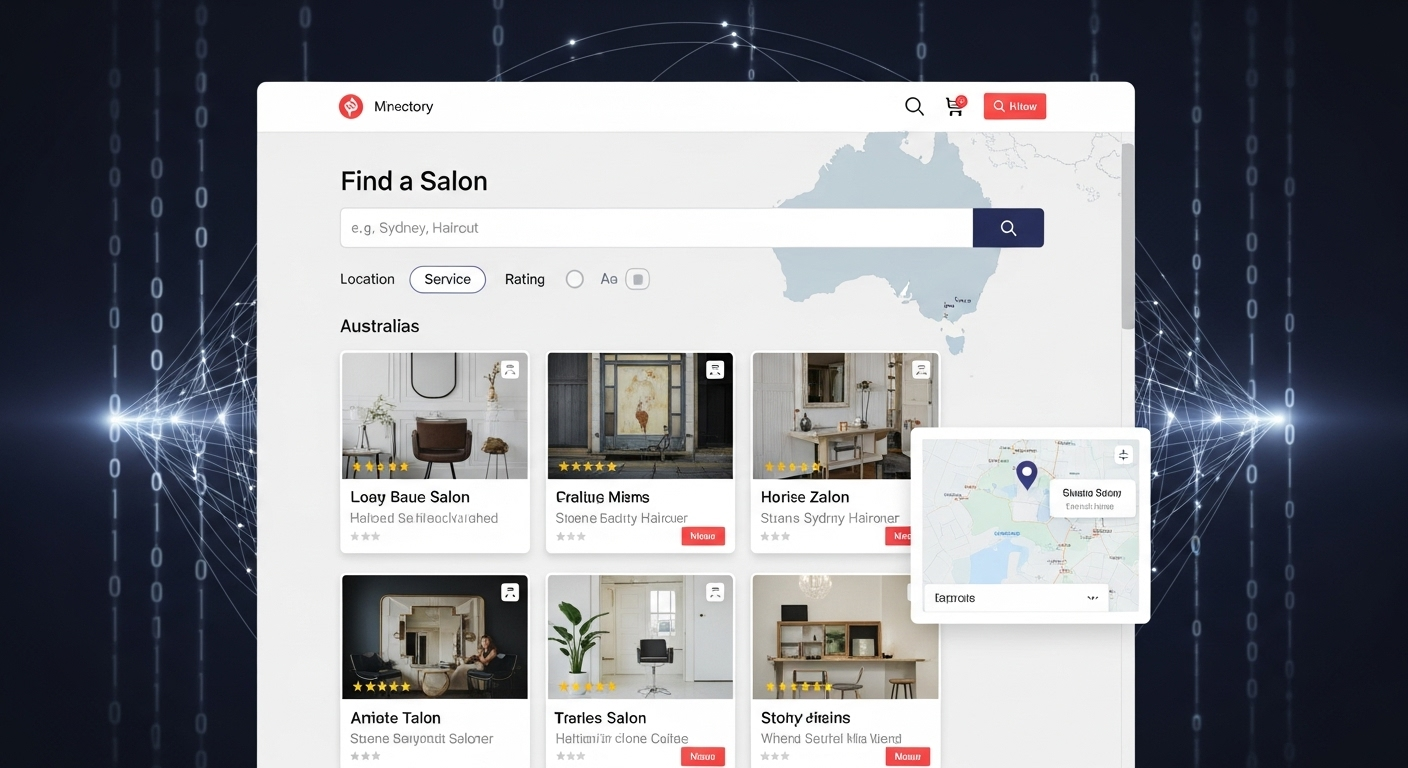
Imagine being able to create a fully functional directory website without needing to write a single line of code. Sounds too good to be true, right? Well, that’s exactly what I did using a free AI model called Horizon Beta from OpenRouter. In this article, I’ll walk you through how I built a beauty salon directory for Australia, step by step, using AI to handle the heavy lifting. If you’ve ever wanted to create a directory website but felt overwhelmed by the technical side, this is for you.
Why AI is a Game-Changer for Web Development
AI has been making waves in various industries, and web development is no exception. According to a Forbes article, AI tools are democratizing web development by allowing people with little to no coding experience to build complex websites. The Horizon Beta model from OpenRouter is a perfect example of this trend. Released on August 1, 2024, this model is currently free to use, making it accessible to anyone interested in experimenting with AI-powered web development.
Understanding the Horizon Beta Model
Before diving into the project, let me give you a quick overview of what the Horizon Beta model is. Developed by OpenRouter, Horizon Beta is a large language model (LLM) designed to assist with various tasks, including code generation. It’s part of a growing suite of AI tools that can understand and generate human-like text, making it ideal for creating website code based on simple prompts.
Key Features of Horizon Beta:
- Free to use (as of August 2024)
- Supports complex instructions for code generation
- Integrates seamlessly with tools like LocalWP for WordPress development
- Offers a 256-token context window, allowing for detailed prompts
I was particularly excited to test this model because it’s free and seemed powerful enough to handle a complex task like building a directory website. Plus, with the rise of directory websites—Statista reports that directory websites have seen a 15% increase in usage over the past year—I knew this project could have real-world applications.
Setting Up the Directory Website
For this project, I decided to create a directory of beauty salons in Australia. Directory websites are incredibly useful for organizing and presenting business listings, and they’re a great way to practice web development skills. Here’s how I got started:
Step 1: Preparing the Data
First, I needed data for the beauty salons. I used GFA Scraper to gather listings from Google. This tool allowed me to scrape business data like names, addresses, and contact information for beauty salons across Australia. Once I had the data in CSV format, I cleaned it up and converted it to an Excel file for easy uploading to WordPress.
Pro Tip: Always clean your data before uploading it to your website. This ensures that your directory looks professional and functions smoothly.
Step 2: Setting Up WordPress Locally
Next, I used LocalWP to set up a WordPress environment on my computer. LocalWP is a fantastic tool for developers because it allows you to build and test websites offline before pushing them live. It’s free, easy to use, and perfect for this kind of project.
Once WordPress was set up, I created a new site called “Salon in Australia” and prepared to build a custom theme for the directory.
Using AI to Generate the WordPress Theme
Now, here’s where the magic happens. Instead of manually coding the theme, I used the Horizon Beta model to generate the necessary code. I had a pre-existing prompt that I’ve used with other AI models like Gemini 2.5 Pro, so I adapted it for this project.
Step 3: Crafting the Prompt
The prompt is essentially a set of instructions that tells the AI what kind of website I want to build. For this directory, I specified:
- The folder name: “beauty-salon”
- The country: Australia
- The site title: “Salon in Australia”
- The post type: “beauty salon”
- The categorization: by state
I also mentioned that the listings were already uploaded, so the AI didn’t need to create custom fields. This is important because it streamlines the process and focuses the AI on generating the theme code.
Step 4: Feeding the Prompt to Horizon Beta
simmeringUsing the OpenRouter client, I pasted the prompt and let the Horizon Beta model do its thing. The model quickly processed the instructions and began generating the code for the WordPress theme. I was impressed by how fast it worked—within minutes, I had a functional theme ready to go.
Personal Insight: When I first saw the code being generated, I was amazed at how the AI could understand such complex instructions and produce usable code. It felt like having a coding assistant who could handle the tedious parts of web development.
Enhancing the Website with AI-Generated Code
Once the theme was generated, I opened it in VS Code to review the code. The AI had created a clean, well-structured theme that included all the necessary elements for a directory website:
- Breadcrumbs for easy navigation
- Business listings with names, addresses, and contact details
- Working hours displayed with icons
- Rating and review sections
- A detailed description area
The AI even handled the styling, using a color palette that matched the beauty salon niche. While I didn’t specify a color scheme in the prompt, the model chose soft, elegant colors that worked well for both light and dark themes.
Step 5: Testing the Website
With the theme installed, I tested the website locally using LocalWP. Everything looked great—the listings were displayed nicely, the navigation was intuitive, and the overall design was professional. I was particularly impressed by how the AI had integrated icons and review topics, making the site visually appealing and user-friendly.
Table: Comparison of AI Models for Web Development
| AI Model | Cost | Complexity Handling | Speed |
|---|---|---|---|
| Horizon Beta | Free | High | Fast |
| Gemini 2.5 Pro | Paid | High | Moderate |
| TR Code | Paid | Moderate | Slow |
As you can see from the table above, Horizon Beta stands out for being free and fast while handling complex tasks effectively.
Why This Matters for Aspiring Web Developers
Building a directory website traditionally requires a solid understanding of HTML, CSS, PHP, and WordPress development. However, with AI tools like Horizon Beta, the barrier to entry is significantly lowered. This means that even if you’re not a coding expert, you can still create functional, professional-looking websites.
Key Takeaways:
- AI models like Horizon Beta can generate complex website code based on simple prompts.
- Tools like LocalWP and GFA Scraper make it easy to set up and populate your website with data.
- Directory websites are a growing niche, offering opportunities for monetization and community building.
If you’re interested in web development but have been intimidated by the technical aspects, I encourage you to give AI-powered tools a try. They can save you time, reduce frustration, and help you bring your ideas to life.
Conclusion: The Future of Web Development is Here
Using the Horizon Beta model to build a beauty salon directory was an eye-opening experience. It showed me just how powerful AI can be in simplifying complex tasks and making web development accessible to everyone. Whether you’re a seasoned developer or a complete beginner, tools like this can help you achieve your goals faster and more efficiently.
So, what do you think? Have you tried using AI for web development? Let me know in the comments below, or better yet, give Horizon Beta a try and see what you can create!
Want to learn more about AI in web development? Check out our related articles or subscribe to our newsletter for the latest updates.




